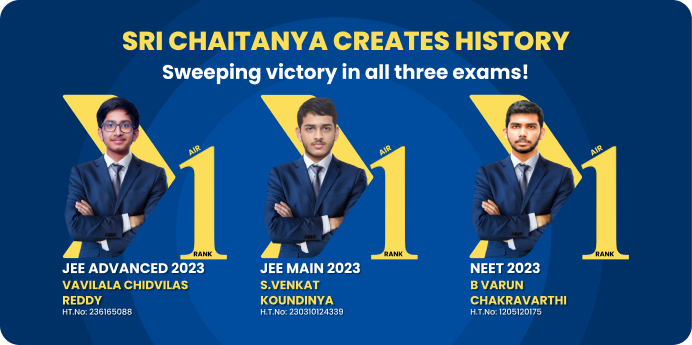




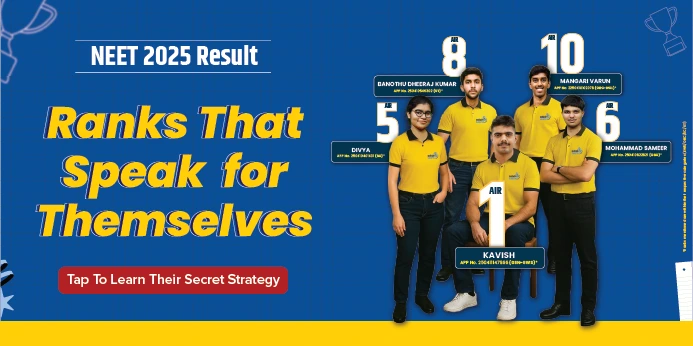
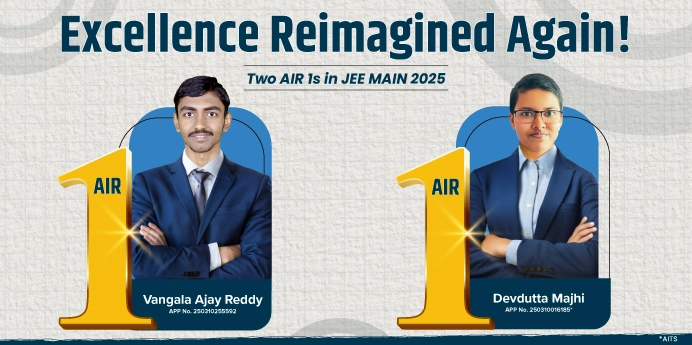
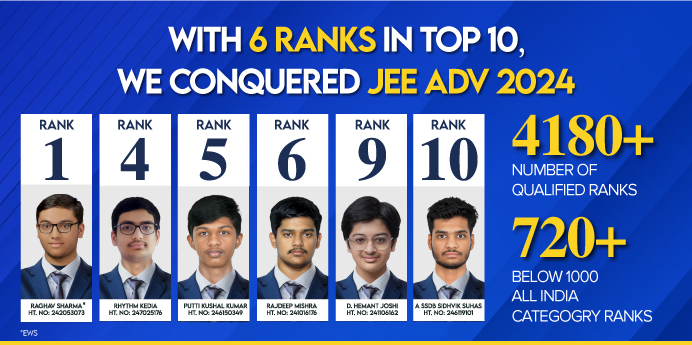



Courses

By Brijesh Sharma
|
Updated on 26 Sep 2025, 11:58 IST
The chapter Indigo by Louis Fischer is an important part of Class 12 English Flamingo book. It tells the story of Mahatma Gandhi’s fight for the poor farmers of Champaran against the British planters. This story is not only about freedom struggle but also about truth, courage, self-reliance and justice. For class 12 board exam students, learning from indigo class 12 questions and answers makes it more easy to understand Gandhi’s methods and values. Students also look for indigo class 12 important questions and answers because these are repeated often in exams and help in scoring better marks.
With the help of indigo class 12 extra questions and answers, practice becomes stronger and student can learn the deeper meaning of this chapter. If you want quick revision before exam, then indigo class 12 notes pdf or indigo class 12 chapter 5 notes are very useful. These cbse class 12 notes simplify the language and highlight the key points. Also, cbse class 12 english notes and ncert solutions for class 12 english make the whole preparation complete. Teachers also advice to solve indigo class 12 mcqs for testing concepts in less time.
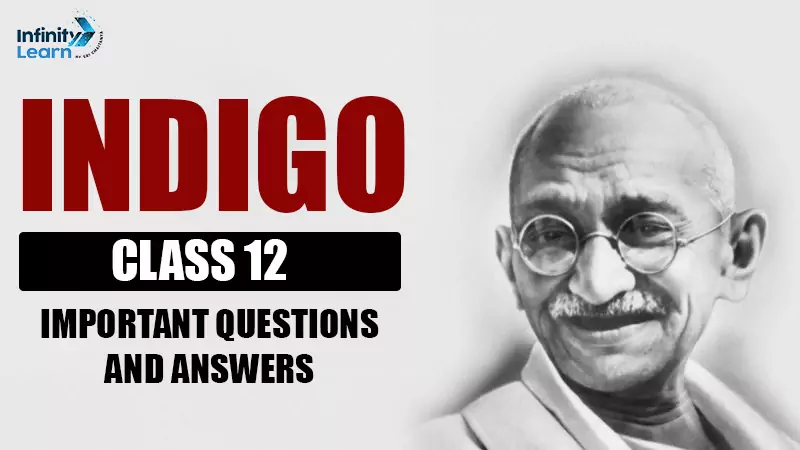
Indigo class 12 Chapter 5 Notes PDF make it easy for students to learn about Gandhi’s fight for indigo farmers in Champaran. This chapter is in CBSE Class 12 English Flamingo book. You can use indigo class 12 important questions and answers and indigo class 12 extra questions for practice. For revision, indigo class 12 notes pdf and indigo class 12 chapter 5 notes are helpful. ncert solutions for class 12 english and indigo class 12 mcqs is also good for preparing.
Question 1. Why did Gandhiji agree to the planters’ offer of a 25 percent refund to the farmers? (Delhi 2009)
Answer: Gandhiji originally asked the planters to give the farmers a 50% refund. But the planters only offered 25%. Still, Gandhiji agreed because the exact amount of money was less important for him. What mattered more was that the planters had to give up some of their unfair power. So, he accepted the settlement since it was a step forward for the farmers.
Question 2. How was Gandhiji able to influence the lawyers at Champaran? (All India 2009)
Answer: Gandhiji criticized the lawyers for charging too much from the poor farmers who were already suffering. He felt it was unfair to take heavy fees when the farmers had little money. His dedication to helping the farmers made the lawyers feel ashamed. Gandhiji’s honest work showed the lawyers they should support the peasants instead of exploiting them.
Question 3. How did Gandhiji help the peasants of Champaran? (All India 2009)

Answer: In Champaran, landlords made peasants grow indigo on 15% of their land and give all the crops as rent. This was very hard for the tenants. Later, when synthetic indigo was made, landlords wanted money to release the peasants from this rule. Gandhiji used peaceful protest to force landlords to return 25% of that money back to the peasants, helping ease their burden.
Question 4. Why did the servants think Gandhiji to be another peasant? (Delhi 2010)

JEE

NEET

Foundation JEE

Foundation NEET

CBSE
Answer: Rajkumar Shukla took Gandhiji to meet Rajendra Prasad, a lawyer. Since Shukla was a poor farmer who often visited that house, and Gandhiji was dressed simply and followed Shukla, the servants thought Gandhiji was also a poor peasant. They did not know he was an important leader, so they treated him as another farmer.
Question 5. Why did Gandhiji agree to the planters’ offer of a 25% refund to the farmers? (Comptt. All India 2011)
Answer: Gandhiji asked the planters to refund 50% to the farmers, but they only offered 25%. Still, he agreed because for him, the exact amount was less important than making the planters give up some unfair control. Since they lost some of their power, Gandhiji accepted the 25% refund to help the farmers.
Question 6. How were Shukla and Gandhiji received in Rajendra Prasad’s house? (Delhi 2012)

Answer: Shukla and Gandhiji were allowed to stay because the servants knew Shukla as a poor farmer asking for help. But Gandhiji was not allowed to draw water from the well because they thought he was untouchable and worried the water would get polluted. This showed the unfair treatment Gandhiji faced despite his work.
Question 7. What made Gandhiji demand 50% refund from the British landlords? (Comptt. Delhi)
Answer: Gandhiji demanded a 50% refund because the landlords had cheated the poor peasants and taken too much money unfairly. He wanted the landlords to return half of the money they wrongly took from the sharecroppers as fair compensation.
Question 8. Why did Gandhiji accept 25 percent compensation? (Comptt. All India 2012)
Answer: Even though Gandhiji wanted 50% compensation for the farmers, he accepted 25% because the money was less important compared to forcing the landlords to give up some of their unfair rights. Gandhiji valued the power shift more than the amount.
Question 9. While at Champaran how did Gandhiji keep a long distance watch on his ashram? (Comptt. All India 2012)
Answer: While staying in Champaran, Gandhiji sent regular letters to his ashram, giving instructions about money and daily work. He told them when to clean the latrine trenches and dig new ones, showing he managed his place even from a distance carefully.
Question 10. “The battle of Champaran is won.” When and why did Gandhiji exclaim this? (Comptt. AI 2012)
Answer: Gandhiji said this when the lawyers decided to support him and go to jail if needed. He felt happy because the lawyers were no longer afraid, and this meant his efforts were making a strong impact, signaling a victory for the peasants’ cause.
Question 11. Why did Gandhiji feel that taking the Champaran case to the court was useless? (Delhi 2014)
Answer: Gandhiji thought courts wouldn’t help because the poor peasants were too scared and powerless. He believed the law courts couldn't give real relief to farmers living in fear. Instead, he wanted to free them from fear so they could fight for their rights.
Question 12. What made the Lieutenant Governor drop the case against Gandhiji? (Comptt. All India 2014)
Answer: The Lieutenant Governor dropped the case because lawyers told Gandhiji they would go to jail with him. This support scared the officials, so they decided not to continue the case against Gandhiji to avoid trouble.
Question 13. How did the Champaran peasants react when they heard that a Mahatma had come to help them? (Comptt. All India 2014)
Answer: When peasants heard that Gandhiji, a great leader, was there to help, they came from far and near to see him. Even the lawyers who helped peasants in courts came to meet Gandhiji and plan their struggle together.
Question 14. How did Rajkumar Shukla establish that he was resolute? (All India 2015)
Answer: Shukla showed his strong will by following Gandhiji everywhere for weeks. Even though Gandhiji was busy in many places, Shukla never left him and kept asking until Gandhiji agreed to visit Champaran, proving his determination.
Question 15. How was Gandhi treated at Rajendra Prasad’s house? (All India 2015)
Answer: Gandhi was allowed to stay because Shukla was known there. However, he couldn’t draw water from the well because servants feared he was untouchable. This showed the social discrimination Gandhi faced even while helping the peasants.
Question 16. What were the terms of the indigo contract between the British landlords and the Indian peasants? (All India 2015)
Answer: The British landlords made peasants plant indigo on 15% of their land and give all the indigo crop as rent. This was unfair because peasants had to work hard and give away all the produce without payment.
Question 17. Why is Raj Kumar Shukla described as being ‘resolute’? (Comptt. Delhi 2015)
Answer: Shukla is called resolute because he kept following Gandhiji and begging him to visit Champaran, even when Gandhiji was busy. After weeks, Gandhiji was impressed by his strong determination and finally agreed.
Question 18. Why was Gandhiji opposed to C.F. Andrews helping him in Champaran? (Delhi 2016)
Answer: Gandhiji didn’t want Englishman C.F. Andrews to help because he wanted Indians to be self-reliant. He felt relying on an Englishman would show weakness and Indians should not depend on outsiders.
Question 19. Why did Gandhiji agree to a settlement of mere 25 percent? (Delhi 2016)
Answer: Gandhiji wanted 50% refund but accepted 25%. To him, the money amount was less important than making planters lose some rights. Accepting the settlement was better than delaying help to farmers.
Question 20. Why was Gandhiji unhappy with the lawyers in Muzzafarpur? Why was he against taking cases to the law courts? (Comptt. All India)
Answer: Gandhiji was unhappy because lawyers charged big fees from poor peasants. He thought courts were useless since peasants were too scared. Gandhiji wanted to free farmers from fear rather than trap them in long legal battles.
Question 21. Describe the difficulties faced by Gandhi at Champaran. (Comptt. Delhi 2010)
Ans: Gandhi reached Champaran to challenge the unfair landlord system that forced sharecroppers to grow indigo on their land and give a big part of harvest as rent to British planters, often around fifteen percent under the tinkathia system, which trapped peasants in fear and debt. After Germany made synthetic indigo, planters pushed peasants to sign new agreements and pay “compensation,” and many who paid wanted refunds, creating confusion and pressure in villages.
Gandhi faced official resistance: the Landlords’ Association refused to cooperate, the Commissioner tried to push him out, and notices were served ordering him to leave, which he calmly disobeyed, accepting legal risk. Even organizing facts was hard—he had to gather thousands of depositions and documents with help from local lawyers while ensuring peasants stayed peaceful and fearless. Despite bullying by authorities and legal hurdles, he persisted, turning fear into courage among peasants and compelling officials to open an enquiry.
Question 22. How was a solution to the problem of indigo sharecroppers of Champaran found? (Comptt. Delhi 2010)
Ans: First, Gandhi documented the truth: peasants were bound to grow indigo and surrender a significant share, and later were forced to pay “compensation” when synthetic indigo made the crop less profitable for planters, which was unfair and deceitful. He built a peaceful mass support system, met officials despite pushback, and secured an official enquiry that collected a “mountain of evidence” against the planters’ practices.
In negotiations, planters expected he would demand full refund; Gandhi asked for 50%, and when planters countered with 25%, he accepted it immediately to break the deadlock, focusing on moral victory over the exact amount. This settlement made landlords surrender both money and prestige, proving they were not above law, and it emboldened peasants to claim rights without fear. Over time, planter control of estates weakened, indigo sharecropping disappeared, and the episode became a model of non-violent, practical justice for rural India.
Question 23. Why and how did Raj Kumar Shukla persuade Gandhiji to visit Champaran? (Comptt. AI 2010)
Ans: Raj Kumar Shukla, a poor sharecropper from Champaran, was determined to bring Gandhi to see the peasants’ suffering under the tinkathia system and the unfair “compensation” after synthetic indigo emerged, which had deepened their misery. Though Gandhi had many commitments, Shukla followed him patiently from place to place, repeatedly requesting a visit until Gandhi promised to come after a scheduled engagement, showing Shukla’s persistence and faith.
This consistent appeal highlighted that local peasants trusted Gandhi’s method of truth and non-violence, believing he could challenge both planters and officials who were dismissing their complaints. Once Gandhi arrived, he verified facts, met officials who tried to push him out, and still stayed, showing that a single peasant’s courage could spark a larger movement. Shukla’s unwavering effort turned a local grievance into a national lesson in civil courage and practical empathy for oppressed rural communities.
Question 24. How was the Champaran incident a turning point in Gandhiji’s life? (Comptt. All India 2010)
Ans: Champaran proved that non-violent resistance could win concrete justice in India, not just as theory but in daily life of the poorest peasants. Gandhi refused to leave when ordered, organized depositions, and faced officials calmly; crowds supported him peacefully, and the court case against him collapsed under public moral pressure, marking the first local success of civil disobedience in India.
The official enquiry validated peasant claims, and the negotiated 25% refund forced planters to surrender money and prestige, which mattered more than the percentage, freeing peasants from fear and legal traps. This victory spread confidence, and within a few years planters left estates, ending the sharecropping system; Gandhi then stayed to work on schools, health, and sanitation, linking political freedom with social uplift. Champaran announced that British authorities could not command him in his own country and crystallized his method of satyagraha for India’s wider struggle.
Question 26. Why do you think Gandhiji considered the Champaran episode to be a turning-point in his life? (All India 2011)
Ans: Gandhi called Champaran a turning point because it showed that truth, mass courage, and non-violence could defeat injustice inside India’s legal-political system, not just in speeches. He was asked to leave by officials, yet he stayed, faced court, and won public moral support, which made authorities back down and open an enquiry into planter abuses. The settlement of 25% refund—accepted by Gandhi to end deadlock—made landlords surrender both money and status, proving they were no longer above law; this moral victory mattered more than the exact amount.
Peasants discovered self-reliance and lost fear, lawyers aligned with public service, and civil disobedience earned its first practical success in India, shaping Gandhi’s future strategy. Later, planters gave up estates and sharecropping ended, while Gandhi connected justice with village welfare—schools, health, sanitation—defining his broader vision of freedom with dignity.
Question 27. How did Gandhiji use satyagraha and non-violence at Champaran to achieve his goal? (2011)
Ans: Gandhi’s satyagraha in Champaran had clear steps: verify truth, stay peaceful, refuse unjust orders, and organize people without hatred. When officials asked him to leave, he politely disobeyed and accepted legal consequences, which drew spontaneous, disciplined support from peasants at the courthouse and made the case against him untenable.
He gathered thousands of depositions to prove exploitation, pushing authorities to set up an official enquiry—truth as evidence, not just slogan. In negotiations, he sought a just, workable end: he proposed 50% refunds; when planters offered 25%, he accepted to break the deadlock, as moral victory and fearlessness for peasants mattered most. The landlords’ refund surrendered prestige, peasants gained courage, and sharecropping control soon faded; all achieved without violence or revenge, only steady pressure of conscience and law. This outcome showed satyagraha’s power to convert conflict into justice and dignity.
Question 28. Give an account of Gandhiji’s efforts to secure justice for the poor indigo sharecroppers of Champaran. (All India 2012)
Ans: Gandhi began by listening and documenting: peasants were forced to grow indigo and later to pay “compensation” after synthetic indigo, a double injustice that robbed them of crops and cash. He met unsympathetic officials and the Landlords’ Association, who tried to block him, yet he refused to leave, gathered thousands of testimonies with lawyers, and kept the movement peaceful to build moral force. Public support at Motihari showed peasants could act without fear, pushing the government to open an official enquiry that found heavy evidence against planters.
In talks, Gandhi aimed for a fair, workable settlement: he asked for 50% refunds; the planters offered 25%; Gandhi agreed immediately, prioritizing the principle that planters must surrender money and status. The result empowered peasants, ended fear, and began the end of sharecropping; Gandhi then linked justice to village reform—schools, health, sanitation—so progress would last.
Question 29. The Champaran episode was a turning point in Gandhiji’s life. Elucidate. (All India 2012)
Ans: Champaran transformed Gandhi’s approach from ideas to tested action: civil disobedience worked in India when rooted in truth, calm courage, and service. He refused to obey an unjust order to quit, faced court with public support, and secured an official enquiry that exposed planter abuses through solid evidence, not anger. The 25% refund settlement, accepted to end deadlock, forced landlords to yield money and prestige; this moral defeat of the powerful broke the peasants’ fear and proved law could be used for the poor.
Within a few years, planters left estates and indigo sharecropping ended, showing long-term impact beyond a single case. Gandhi then stayed for social uplift—schools, health, sanitation—making freedom practical for village life and setting a template for future campaigns. Champaran declared that British officials could not command him in his own country and shaped his national strategy.
Question 30. Why did Rajkumar Shukla invite Gandhiji to Champaran? How did Gandhiji solve the problem of the indigo farmers? (All India 2012)
Ans: Rajkumar Shukla was a poor and illiterate indigo farmer from Champaran who invited Gandhiji to visit his district to help the peasants who suffered under the British landlords. He kept following and convincing Gandhiji to come despite his busy schedule, showing persistence and strong faith in Gandhi’s method of justice. When Gandhiji came, he first collected evidence by talking to thousands of peasants and took depositions with the help of lawyers.
Though officials and landlords tried to block him, Gandhiji’s peaceful protests made the British government set up an inquiry committee. After gathering proof against the planters, Gandhiji negotiated a settlement of a 25% refund for the farmers, which was a moral victory. This struggle made peasants aware of their rights and more courageous. It was a key step towards ending exploitation and empowering farmers.
Question 31. Exploitation is a universal phenomenon. The poor indigo farmers were exploited by the British landlords to which Gandhiji objected. Even after our independence we find exploitation of unorganized labour. What values do we learn from Gandhiji campaign to counter the present day problems of exploitation? (Delhi 2013)
Ans: Gandhiji’s campaign in Champaran teaches us important values to fight exploitation even today. First, those who are oppressed must learn to be brave and overcome their fear, because fear stops them from demanding their rightful share. Empowering workers and farmers to stand up peacefully against injustice is important.
Second, focus should be on finding solutions, not just complaining about problems. Gandhiji showed patience, non-violence, and persistence even when facing threats and obstacles. A humanitarian approach, willingness to face hardships calmly, and courage to stay non-violent can help solve exploitation problems. These values remain relevant to uplift unorganized labor and poor workers in India today.
Indigo shows the hard life of indigo farmers in Champaran, Bihar, and how Mahatma Gandhi helped them get justice. The chapter explains Gandhi’s ideas of truth, non-violence, courage, and self-reliance in real action. It’s not just about history; it’s about standing for what is right, even when power is against poor people. Gandhi listened first, collected facts, and fought calmly. This made the British planters step back and farmers feel less fear. The story also teaches moral values, leadership, and community help. Very helpful for exams and life both.
Key Themes:
No courses found
It explains Gandhi’s Champaran movement, showing truth, courage, and social justice, with easy lessons for exams.
It gives structured answers, extra questions, and MCQs for quick revision and better writing in board exams.
Themes, character roles (Gandhi, Rajkumar Shukla), tinkathia system, court scene at Motihari, and outcomes.
Yes, start with NCERT solutions, then add important and extra questions, plus MCQs for speed practice.
Read notes, revise key quotes/keywords, practice short/long answers, and solve a mixed set of MCQs quickly.